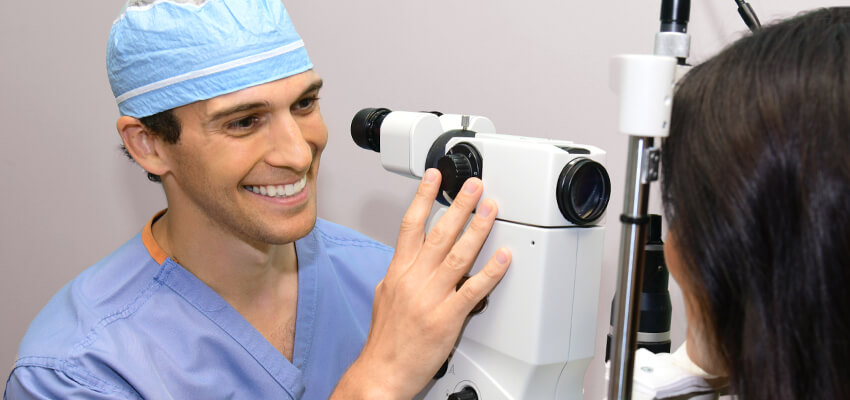
Human amniotic membrane (AM) has been proven to be an effective way of promoting corneal healing.
AM is harvested from placenta tissue obtained during elective cesarean section births. The tissue may be preserved through dehydration or cryogenics (freezing).
AM acts as a physical barrier to protect the cornea as it heals. Amniotic membrane is known to contain many growth factors and proteins that provide an enriched environment which aids the cornea in healing. It also reduces friction and pain from the eyelid during blinking, promotes the growth of cells, and reduces inflammation.
The first attempts at AM grafting were done in the 1940s, with minimal success. However, the techniques used to harvest, prepare, and insert AM grafts into the eye have dramatically improved, making the procedure effective for treating a number of conditions, including
- Pterygium
- Dry Eye
- Corneal Trauma
- Corneal Infections
- Neurotrophic Keratitis
- Recurrent Corneal Erosion
- Non-healing corneal epithelial defects
- Filamentary keratitis
The Procedure
In the past, the amniotic membrane graft had to be surgically inserted and sutured into the eye in an operating room. New developments, however, mean that in many cases AM can be placed on the eye under a contact lens in the office. The AM tissue remains in the eye for a period of time to promote healing, the tissue itself dissolves and the contact lens is removed. For more severe cases, multiple layers of amniotic membrane tissue can be glued or sutured to the surface of the eye in the operating room.
Components of the amniotic membrane graft are similar in composition to the conjunctiva, the clear, thin membrane that covers part of the front surface of the eye and the inner surface of the eyelids. Researchers believe that this similarity helps promote growth of similar cells in the cornea and reduces inflammation, allowing the cornea to heal.
Because it is harvested living tissue, the AM graft is carefully screened before use. It is tested for diseases such as HIV and hepatitis. It is then treated and cleaned with balanced saline solution and a cocktail of antibiotics to remove impurities and any potential pathogens.
Healing time varies depending upon the patient and the complexity of the procedure, but the AM graft typically promotes healing within two to 15 days. It may take some time after that, however, for vision to improve and multiple amniotic membrane grafts may be required to complete the healing process.
If an amniotic membrane graft is a suitable treatment for your condition, the Cornea Specialists at Drs. Campbell, Cunningham, Taylor & Haun will conduct a thorough examination of your eye, evaluate treatment options, and suggest the best one for you.
To schedule an appointment for an eye examination, call (865) 584-0905.



 >
>
Get Social